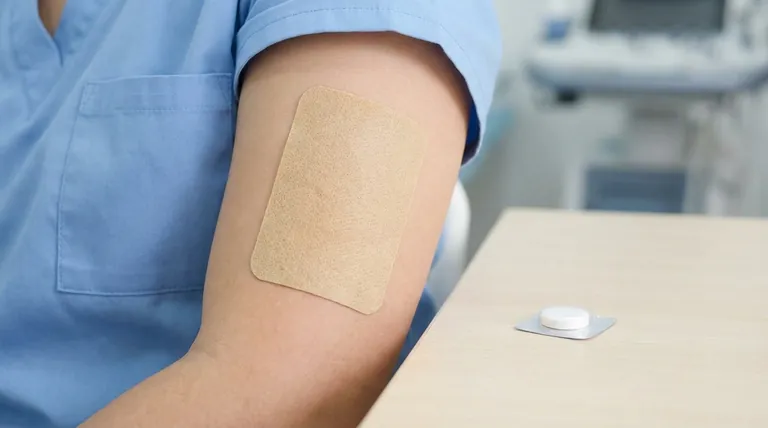From a clinical standpoint, the primary differences between the transdermal and sublingual formulations of asenapine relate to their administration route and dosing frequency. While the transdermal patch offers the convenience of a once-daily application, there have been no direct, head-to-head clinical trials comparing its efficacy or overall side effect profile against the established twice-daily sublingual tablet.
The choice between transdermal and sublingual asenapine is not based on proven differences in efficacy but on practical considerations of dosing convenience, patient adherence, and the specific challenges associated with each delivery method.

The Core Difference: Administration and Dosing
The most significant distinction between these two formulations is how the medication is delivered to the body, which directly impacts the dosing schedule and patient experience.
The Sublingual Formulation (Twice-Daily)
The original asenapine formulation is a sublingual tablet, meaning it is placed under the tongue to dissolve and be absorbed directly into the bloodstream.
This method requires a twice-daily dosing schedule. It also necessitates specific patient behaviors, such as avoiding food or drink for a period after administration to ensure proper absorption.
The Transdermal Formulation (Once-Daily)
The newer formulation is a transdermal patch applied directly to the skin. This system provides a steady, continuous release of medication over a 24-hour period.
This offers a significant shift to a once-daily application, which can simplify the treatment regimen and may improve medication adherence for certain individuals.
Understanding the Trade-offs
Choosing a formulation requires acknowledging the lack of direct comparative data and understanding the inherent benefits and drawbacks of each delivery system.
The Critical Gap: Lack of Direct Comparison
It is essential to recognize that no clinical trials have directly compared the transdermal patch to the sublingual tablet.
Therefore, we cannot make any evidence-based claims that one is more or less effective than the other. Clinical decisions must be based on other factors.
Patient Adherence and Convenience
For patients who struggle with remembering to take medication multiple times a day, the once-daily patch may offer a clear advantage in promoting consistent adherence.
The transdermal system bypasses the oral route entirely, eliminating concerns about taste, swallowing, or the need to wait before eating or drinking.
Potential for Application Site Reactions
A known trade-off with any transdermal medication is the potential for skin irritation at the application site.
Patients may experience redness, itching, or a rash where the patch is worn, a factor not present with the sublingual formulation.
Making the Right Choice for Your Patient
The selection between transdermal and sublingual asenapine should be a collaborative decision based on the individual patient's needs, lifestyle, and history.
- If your primary focus is simplifying the dosing regimen: The once-daily transdermal patch offers a clear advantage over the twice-daily sublingual tablet.
- If your primary focus is avoiding oral administration challenges: The transdermal patch is the superior option, as it bypasses issues of taste and the food/drink restrictions associated with sublinguals.
- If your primary focus is minimizing new side effect variables: The sublingual formulation has a well-established side effect profile, while the transdermal patch introduces the distinct possibility of application site reactions.
Ultimately, the best formulation is the one that aligns with the patient's specific needs to ensure consistent and effective treatment.
Summary Table:
| Feature | Transdermal Patch | Sublingual Tablet |
|---|---|---|
| Dosing Frequency | Once-daily application | Twice-daily dosing |
| Administration | Applied to skin (bypasses oral route) | Dissolved under the tongue |
| Key Advantage | Simpler regimen, may improve adherence | Well-established side effect profile |
| Key Consideration | Potential for application site skin reactions | Requires fasting before/after administration |
| Direct Efficacy Comparison | No head-to-head clinical trials available | No head-to-head clinical trials available |
Need a reliable transdermal patch for your formulation?
As a bulk manufacturer of reliable transdermal patches and pain plasters, Enokon provides healthcare and pharma distributors and brands with the technical expertise for custom R&D and development. Let us help you bring a convenient, patient-friendly transdermal product to market.
Contact our experts today to discuss your project requirements.
Visual Guide

Related Products
- Far Infrared Heat Pain Relief Patches Transdermal Patches
- Icy Hot Menthol Medicine Pain Relief Patch
- Menthol Gel Pain Relief Patch
- Heating Pain Relief Patches for Menstrual Cramps
- Far Infrared Deep Heat Relief Patches Medicated Pain Relief Patches
People Also Ask
- How does capsaicin work in the medicated heat patch? The Science Behind Pain Relief
- What are the key features of the Deep Heat Pain Relief Back Patch? Get Up to 16 Hours of Drug-Free Relief
- What types of pain can the Deep Heat Pain Relief Back Patch be used for? Targeted Relief for Muscles & Joints
- Are heat patches safe for all body parts? Key Safety Zones and No-Go Areas Explained
- What did the UK Million Women Study find regarding transdermal versus oral hormone therapy? A Safer Choice for Gallbladder Health














